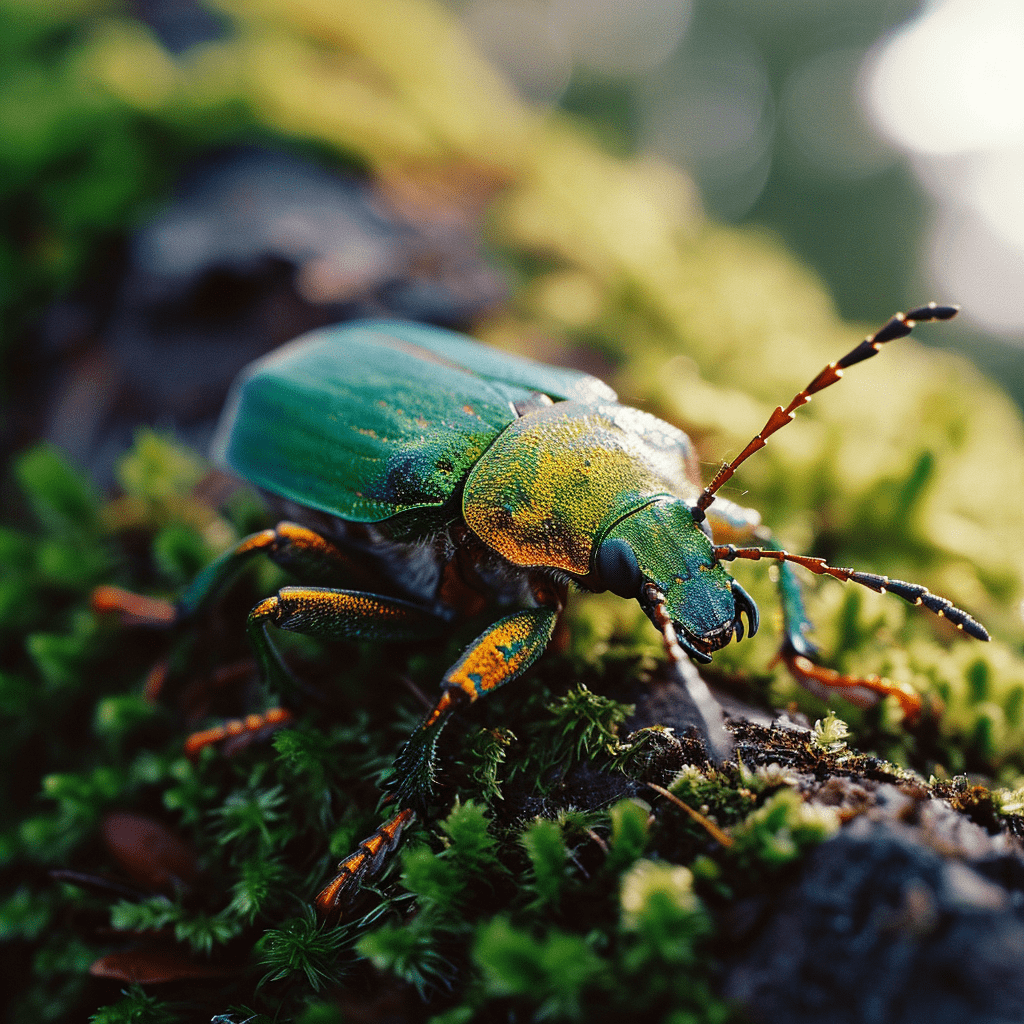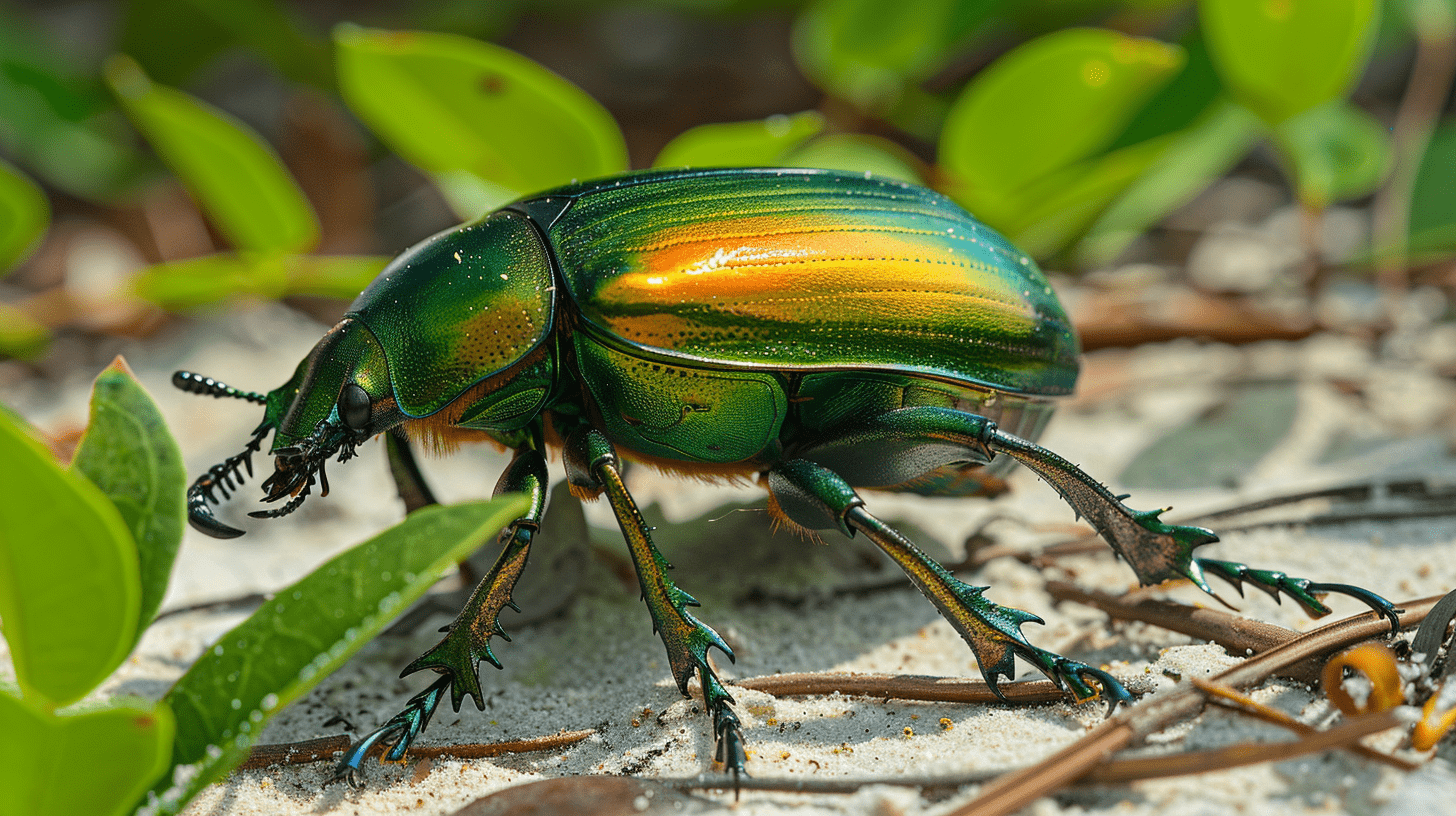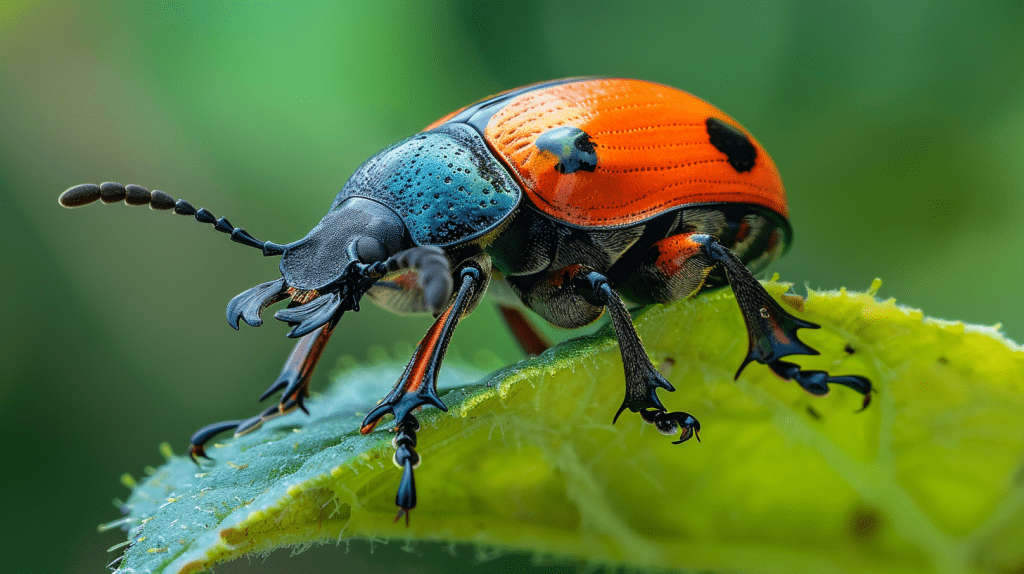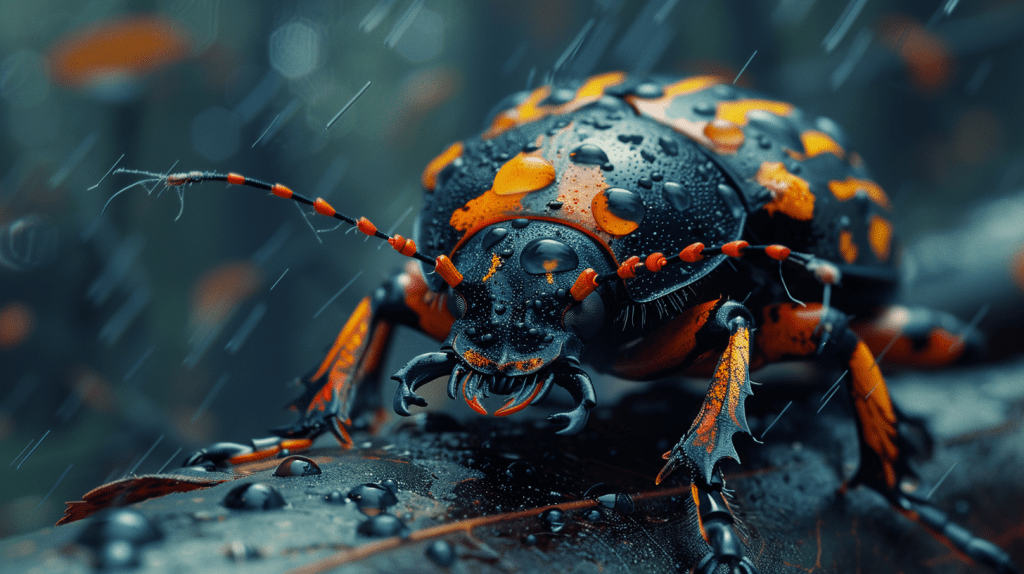
Table of Contents
Ever noticed your garden looking a bit worse for wear lately? You might be dealing with Japanese beetles, one of the most notorious garden pests. These shiny, metallic-green insects can wreak havoc on your plants, turning lush foliage into skeletonized remains in no time.
But don’t worry, this article will help you identify, manage, and eventually protect your garden from these invasive beetles. You’ll learn strategies to keep your plants thriving and your outdoor space looking its best. Ready to reclaim your garden? Let’s immerse.
Key Takeaways
- Japanese Beetle Identification: Learn to recognize Japanese beetles by their metallic green heads, bronze wings, and unique white tufts of hair on their abdomen.
- Life Cycle Insights: Understand the four stages of the Japanese beetle’s life cycle—egg, larva, pupa, and adult—crucial for effective pest management.
- Impact on Gardens: These pests feed on over 300 plant species, causing severe damage to leaves, flowers, fruits, and turfgrass.
- Control Measures: Identifying these beetles in both adult and larval stages helps in implementing targeted control strategies to protect your garden.
- Invasive Status: Being invasive, Japanese beetles are closely monitored, especially in regions like the Twin Cities and southeast Minnesota.
What Are Japanese Beetles?

Japanese beetles (Popillia japonica Newman) are invasive pests native to Japan. Since their accidental introduction to the U.S. in 1916, they have caused major damage to plants and turfgrass across the eastern United States.
Quick Facts
- Japanese beetles feed on the leaves, flowers, or fruit of over 300 plant species.
- Grubs chew grass roots, leading to brown, dead turf.
- They are prevalent in the Twin Cities metropolitan area and southeast Minnesota.
- Minnesota Department of Agriculture monitors their presence as an invasive species.
Life Cycle
The life cycle of Japanese beetles has four stages: egg, larva, pupa, and adult. The life cycle of Japanese beetles (Popillia japonica) consists of four distinctive stages: egg, larva, pupa, and adult. Understanding each stage is crucial for effective monitoring and management of this invasive species.
- Egg Stage: Female Japanese beetles lay eggs in mid-summer, typically during July and August. These eggs are small, white, and oval-shaped, and they are carefully deposited 2 to 4 inches deep in the soil. A single female can lay between 40 to 60 eggs throughout her life span, often preferring moist, grassy areas for optimal conditions. Approximately two weeks after being laid, the eggs hatch into larvae, or grubs, if environmental conditions, such as soil moisture and temperature, are favorable.
- Larva Stage: Upon hatching, the beetle larvae, commonly known as white grubs, begin to feed on the roots of grasses and other plants. This stage lasts from late summer through early fall. The larvae molt multiple times as they grow, with their development heavily influenced by soil conditions and temperature. During this period, the grubs are most vulnerable and can cause significant damage to lawns, golf courses, and agricultural crops as they voraciously feed on roots, leading to yellowing and dead patches of grass. As temperatures drop, the larvae burrow deeper into the soil to overwinter.

Expert Beetle Control in Parrish!
Ready to keep your home beetle-free? Reach out to Parrish Pest Control at (941) 297-2817 for fast and effective beetle management solutions. Serving Parrish, FL, we guarantee a safe, comfortable, and beetle-free environment for your home.
Get Started- Pupa Stage: In late spring, as temperatures rise, the grubs move closer to the soil surface and enter the pupal stage. This transformation usually takes place in May or June and lasts for about 1 to 3 weeks. During the pupal stage, the grubs undergo metamorphosis, reorganizing their tissues to emerge as adult beetles. The pupa remains inactive while dramatic physiological changes occur inside its protective casing.
- Adult Stage: Adult Japanese beetles emerge from the soil in early summer, typically around late June to July. They are easily recognizable by their metallic green bodies and copper-brown wing covers. Adult beetles have a life span of 30 to 45 days and are known for their feeding habits, which include skeletonizing leaves, flowers, and fruits of more than 300 plant species. These beetles are most active on warm, sunny days and tend to congregate in large numbers, intensifying the damage to plants. After mating, females return to the soil to lay eggs, thereby perpetuating the life cycle
By understanding the intricacies of the Japanese beetle’s life cycle, gardeners, landscapers, and agricultural professionals can implement targeted control measures to mitigate the impact of this pest. Each stage presents unique opportunities and challenges for effective management, from soil treatments to protecting foliage from adult feeding.
How to Identify Japanese Beetles

Identifying Japanese beetles, particularly in the adult and larval stages, is crucial to managing their impact on your garden.
Adult Japanese Beetles
You can identify adult Japanese beetles using several distinct features:
- Length and Shape: They are approximately 1/2 inch (1.3 cm) long with an oval-shaped body.
- Color: They have a metallic green head and thorax, complemented by metallic-bronze wing covers.
- Hair Patterns: Look for six small tufts of white hair on the sides of their abdomen under the wing edges, plus two patches of white hair at the abdomen tip.
Japanese Beetles
Popillia japonica

Color: Metallic green with bronze-colored wing covers.
Size: Approximately 0.5 inches (12.7 mm) in length.
Legs: 6
Antennae: Yes
Shape: Oval
Distinctive Features: Six tufts of white hair just below the wing covers on each side of the abdomen.
Region: Found across many parts of the United States, particularly in gardens and on crops.
Larval Stage (White Grubs)
Japanese beetle larvae, also known as white grubs, have unique characteristics:
- Shape and Color: The grubs are C-shaped and range from white to cream-colored with a distinct tan-colored head.
- Size: They measure from 1/8 inch to about one inch long.
- Legs: Their legs are clearly visible.
- Distinguishing Feature: The undersides of their abdomen tips display a unique pattern of spines and hairs.
Recognizing these features allows you to correctly identify Japanese beetles. Once identified, you can take appropriate measures to control their population, protecting your garden from extensive damage.
Signs of Japanese Beetle Damage

Recognizing the signs of Japanese beetle damage is crucial for timely intervention. Look for skeletonized leaves, where only the veins remain, as a hallmark of adult beetle feeding. Flower petals may also show signs of destruction, appearing ragged and torn. In the larval stage, white grubs feed on grassroots, leading to patches of dead or dying grass that can be easily pulled up.
By staying vigilant and taking proactive steps, you can protect your garden from these invasive pests, ensuring a healthy and thriving outdoor space.
Frequently Asked Questions (FAQs)
Does vinegar get rid of Japanese beetles?
Vinegar sprays can kill Japanese beetles, but they also kill your plants. We don’t recommend using vinegar directly on your plants, and you would have to spray it directly on the leaves for effective Japanese beetle control. Even horticultural vinegar isn’t safe to use on your plants.
What time of day are Japanese beetles most active?
Japanese beetles emerge at temperatures above 70 degrees Fahrenheit — but preferring much warmer temperatures of 85-95 degrees. They are most active on warm, sunny days between 9 a.m. and 3 p.m. Humidity of 60% or higher retards their flying and induces heavy feeding and destruction.
Why are Japanese beetles swarming my yard?
They also have quite the sweet tooth for grapes, plums, roses, and hollyhocks. Another factor that will have them swarming to your lawn is the pheromones of other beetles, so it’s important to keep your population low or nonexistent.
What repels Japanese beetles?
Companion planting: Incorporate plants that repel Japanese beetles such as catnip, chives, garlic, odorless marigold, nasturtium, white geranium, rue, or tansy near susceptible plants to help keep the beetles away.
Can you permanently get rid of Japanese beetles?
Japanese beetles will go away during winter. However, more grubs will probably show up in spring. If you want them to go away permanently, you have to break the cycle by taking out all or most of a generation of adults or grubs.






